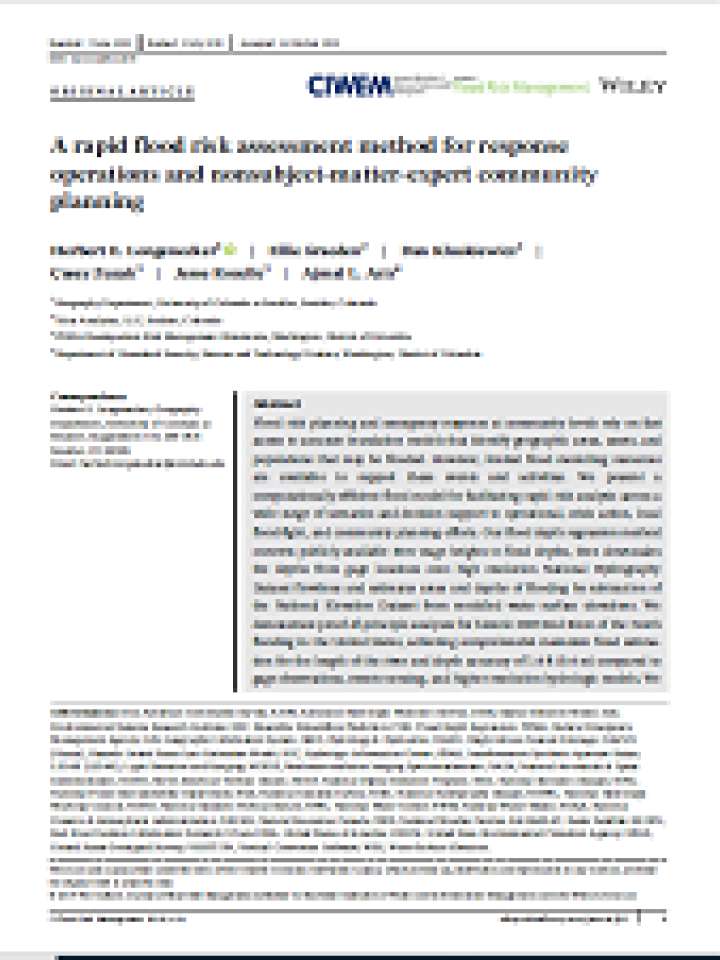A rapid flood risk assessment method for response operations and nonsubject‐matter‐expert community planning
Flood risk planning and emergency response at community levels rely on fast access to accurate inundation models that identify geographic areas, assets, and populations that may be flooded. However, limited flood modelling resources are available to support these events and activities. The paper presents a computationally‐efficient flood model for facilitating rapid risk analysis across a wide range of scenarios and decision support to operational, crisis action, local flood‐fight, and community planning efforts.
The flood depth regression method converts publicly‐available river stage heights to flood depths, then downscales the depths from gage locations onto high resolution National Hydrography Dataset flowlines and estimates areas and depths of flooding by subtraction of the National Elevation Dataset from modelled water surface elevations, demonstrating proof‐of‐principle analyses for historic 2009 Red River of the North flooding in the United States, achieving comprehensive mainstem flood estimation for the length of the river and depth accuracy of 1.4 ft (0.4 m) compared to gage observations, remote sensing, and higher‐resolution hydrologic models.
The paper also demonstrates the utility of the method to inform planning and response decisions in preparation for flooding in a companion scenario for Yerington, Nevada, and call for further research and operationalization of riverine inundation mapping techniques.
Explore further
